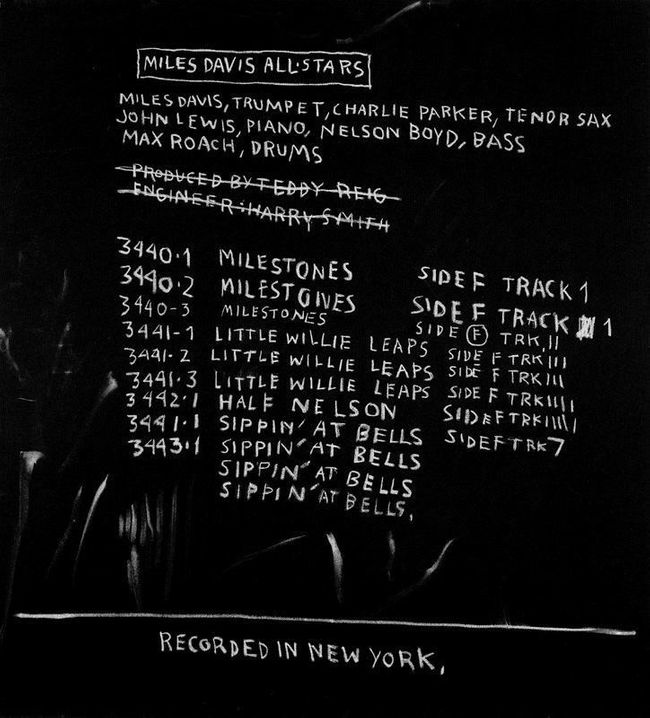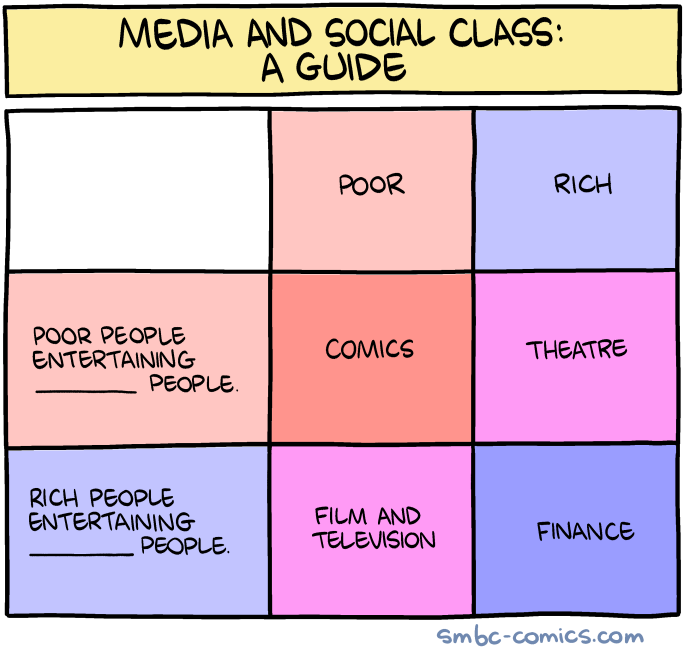
This might be a familiar aphorism to the reader. It’s an unusually rich sentence: it says something we might ostensibly agree with but every other word seems to offer an angle of refutation. I have written before about an alternative way of thinking of music, not as a time art but as a space art.
The last words, which are sonorous and which remain, are lifted directly from an interview John Cage gave in the early 90s. He is talking about Marcel Duchamp’s Sculpture Musicale, which can be conceptualised as either a sculpture that makes noise or as a musical piece written for a specific (spatial) arrangement of electronic instruments. The listener is situated in, or near, the sculpture, and the various sound sources such as mechanical keyboards and loudspeakers—the lack of human players is emphasised—produce constant streams of sound which suggests form and shape to the ear the way a material sculpture suggests form and shape to the eye. Confronted by this, the listener will usually note the difficulty in explaining how this setup is intrinsically different to the experience of hearing an orchestra, spatially arranged as distinct players in a pit.
The orchestral setup is historically unusual: a distinctly European phenomenon and even within that continent a relatively recent development, compared with the entire history of humans performing music. The idea of music unfolding in time seems as natural as can be to us now, given the imagery of unfolding implicit in the linear organisation of musical scores. I expect in the pre-industrial societies, for which music tended to appear in specific ritual settings, this metaphor would be less intuitive.
For almost all of human history music was geographically specific, and would be just as much a decoration of space as time. It was a decoration of events, if anything. Time, the way it is felt today, could not be conceived of in ancient Sumer. The unfolding of time, it’s progression, takes for granted the modern experience of society as constantly growing, pooling and reinventing itself. For music to decorate this time, as an unfolding and linear march, would require an essential consciousness of history which was almost as remote to the vast majority of humans throughout history as was consciousness of their nationality.
At the top of the page is a quote from Kenneth Clark, and to those who know who he is that suggests a specific sort of meaning.¹ Kenneth Clark was a British art historian and gallery director, widely understood to be one of the most influential of the 20th century. Based on the state of the 20th century art gallery, this should tell you plenty about Clark: born into money, Clark was introduced to the High Culture of the art world in very early life. Though not necessarily an active elitist (he is known as a champion of bringing arts to the masses, and was a lifelong Labour voter) Clark’s upbringing and social milieu instilled the understanding of art-as-mysticism which characterises the art establishment. Clark’s expansieve TV documentary Civilisation, intended to serve as an outline of a thousand years of art history, includes only Western artists and only men. Within the text itself, Clark has this to say:
This wooly, well-behaved passage makes the jump from trite to absurd once Clark gives the game away: in the final sentence he says the quiet part out loud. The framing of his beliefs as essentially reasonable and sensible naturalises the bourgeois inertia of the British upper classes. If the good, sensible human decency of the British “human sympathy” were indeed more valuable than “ideology” then the British proletariat would not have had to struggle for centuries to abolish eighteen hour days and child labour. Feminists would not have had to struggle for centuries for the vote, or for an end to spousal rape (legal in the UK until 1992).
What then does the aphorism mean, when it comes from this mouth? The “decoration of space” seems somehow a more specific claim than the words on their own suggest. Which space? Or rather, whose? I once saw an exhibition in one of the usual “white cube” style galleries which was dedicated to the conceptual exploration of margins. Accompanying various 20th century pieces were placards explaining exactly why the small, clearly delineated paintings housed in little squares placed at regular intervals on the walls mounted radical attacks on the presuppositions of the art world. The phrase “art world” here functions a little bit like “Sea World”, where what is essentially a universe of heaving pressure and turmoil and genesis becomes a thing bottled and kept in a tank.
What then of “decoration”? Somehow from Clark—the spinner of grand narratives of art mysticism—it seems out of step with the seriousness of the endeavour. My dad is a painter & decorator, and I doubt that Kenneth Clark would have seen much enduring spiritual value in what he does, despite the verbs painting and decorating basically describing the objects of his professional fascination. Painting is one thing, decoration seems another. Decoration is what primitive people do when they weave beads into their hair. It’s not the business of the Louvre. And anyway, what space is being decorated? The space of the galleries has been created out of nowhere to host the pictures—there is no organic, symbiotic relationship here between the art and the space, or the art and “the masses”. It’s rather like creating beads designed to be woven into synthetic hair, collected in wigs not being worn by anyone.
Though it doesn’t scan as well, the more accurate way to describe Clark’s political project of inclusion was that he tried to bring the masses to art, and not the other way around.
In Ways of Seeing John Berger engineers a situation that makes his readers reflect on the way that words are arranged near pictures changes the meaning of those pictures. A reproduction of Van Gogh’s Wheatfield With Crows is presented without comment. Berger invites us to look at it before turning the page.

We turn the page, and the same image is again reprinted, only this time it comes with a caption.
The painting now serves to illustrate the text. Perhaps it only serves to illustrate the text. When a friend quoted the above aphorism to me, neither of us knew who said it and so we cheerfully conducted discussion as though the thing appeared from thin air. In fact, the quote appears to be from Jean-Michel Basquiat—putting it in the mouth of Kenneth Clark was an engineered situation of mine. The idea of a Kenneth Clark engenders a specific logic by which we might think through the aphorism, and the idea of Basquiat engenders a very different logic. I can find no source for Basquiat having said the phrase. It’s possible that he came up with it, but perhaps more likely that he was the first famous person to say it. In any case, it changes the meaning. Berger’s shock tactics do not require that the words he prints alongside the image are true: indeed it perhaps better illustrates the power of his engineered situation that some art historians dispute that Wheatfield with Crows actually was Van Gogh’s final work. The same is true of the Basquiat connection. It doesn’t matter if he said it or not, because now the idea that he said it is in my head and in yours and there is a spontaneous generation of meaning there which was not otherwise accessible to us.
A discussion of Basquiat’s work has to involve a negotiation between the formal technique of his collage, and the content of the symbols that he manipulates. These are symbols of either a conscious, qualitative experience of blackness, or they are expropriations of the colonial and white supremecist imagery of the establishment placed amongst the images of black experience to produce a tension, a dialectic. The dialectic in the art then reflects real instances of black identity, which takes the form of a condition of self and community contingent on historical intersections with migration, trade, consumption, technology, politics, philosophy, language…

The word “collage” comes from the French “coller” meaning “stick together”, which normally implies the use of glue and the physical arrangement of images that are literally cut and pasted. The broader understanding of the collage technique is one that emphasises only the appropriation of imagery, and its subsequent syntactical arrangement. For Basquiat this involves much more than arranging found imagery, it means looking for an aesthetic of eclectic combination. The formal technique of the collage is what allows his various dichotomies—figurative and abstract, intellectual and visceral, industrial and prelapsarian—their uncomfortable co-existence.
The connection Basquiat has with graffiti is what makes the aphorism so different to Kenneth Clark’s. The decoration of space, from these two mouths, means totally different things. Graffiti’s appropriation of commercial and public surfaces as impromptu canvasses constitutes a democratisation of space. By the 1980s graffiti as a mass movement had passed its peak, but Basquiat was uniquely successful in bringing elements of the movement into the establishment accepted art world—his work emphasised not just a spatial modularity but a cross-discipline and cross-culture modularity. To conceive of the way Basquiat uses space we must consider not just the modular treatment of art in relation to the surfaces it lives on (canvas, building, billboard, train) but in the broader conception of space as a medium of orientation and distance. This more abstract understanding of space takes into account things like the relative similarity of drawn figures to real faces, the perception of cultural distances (Basquiat as Beethoven loving art student and as black radical) and difference in aesthetic situation—the combination of neo-expressionism and the conceptual radicalism of his “Facts” pieces.

New York was uniquely conducive to this dissolving of concrete space. Historically, aggressive zoning regulation effectively turned the skyline into a collaborative curated art project. Any coherent vision, or coherent architectural movements, degenerated by the 1970s into a mishmash whose aesthetic underpinnings were that of capital’s inscrutable logic. The edges and corners of “International style” skyscrapers² bullied red brick residential buildings and the ancient excesses of the 1930s Art Deco monuments, and the pockmarked roads sewed these to blocks of dismal ant boxes not partaking in any sort of style at all. Across this anachronistic arrangement of concrete, brick and glass, the vitality of New York’s trade, commerce and travel produced the epic montages of advertising imagery that bombarded people with incoherent messaging. The graffiti that popped up in places where the authorities could not stamp it out added further to the noise: authentic voices of alienation and anger providing subtitles for the underlying sickness behind the smiling faces on the billboards.
The literal noise was also important: in the 1992 interview John Cage drew attention to the ongoing drone of traffic and horns that probably became the most well known music of the 20th century, though its listeners rarely recognised it as such. The unfolding and overlapping signals of punk, disco and funk in the 70s, in their own way a dissolving of space as medium of distance and orientation, provided the unconscious precedent that, when it underpinned the Frankenstein experimentation of hip hop, allowed that ostensibly avant-garde music its popular logic.

It is an unhappy irony that for Basquiat, working in the seething financialised hatred of Reagan’s America, it was not music that decorated time, but money. There ceased to be any tacit taboo in the Arts regarding the stuff, and so artists had to grin an press shot of a black artist with bare feet became America’s secular icon painting.
Nothing seemed to justify better the inherent success of capitalism as an organising principle for social, artistic, and spiritual relations, than the fact that a black man with radical politics could rise to the very top of “art world”—here synonymous with “art market”. The very act of partitioning off bits of the world as “art world” (as though outside of this realm art does not appear) has the effect of producing these awkward synonyms. The enduring rhetorical value of Basquiat’s mythology for the ruling class is that even explicit anti-capitalism fails to function as capital’s antithesis. Veneration of Basquiat as a radical figure cannot be taken for granted, because Basquiat (now dead) can only be radical in an ongoing performance—the living and moving relationship that we as observers and readers must have with his art and his mythology. His formal radicalism, his treatment of space, cannot be radical if we quantise and freeze the margins of his work so that it functions only as the decoration of specific spaces, as in the decoration of Kenneth Clark’s space.

This piece, Serengeti Cyborg by Fanuel Leul, is featured prominently at the top of the wikipedia page for Afrofuturism. Special attention should be paid to the space of surface. In this interpretation of Afrofuturism, the futurism in fact begins where the black body ends. The heavy-handed grafting of machinery and technology onto a body otherwise untouched by modernity. This is the logical conclusion of the decoration of the space as mediated by rupture: the historical (but crucially ongoing) rupture of colonialism and the literal rupture of limbs blasted apart by land-mines left over from Europe’s adventures in North and East Africa.
Kodwo Eshun in his lecture Narratives of a Near Future points out that Afrofuturism has trouble conceptualising blackness as something situated in a historical continuum. “Afrofuturism has difficulty understanding what the future will do with blackness… It has problems understanding how to narrate its ongoing transformation”. When Neoliberal logic can so deftly cordon off the modular and produce discrete objects with exorbitant exchange values³, it is not difficult to see how this difficulty is perpetuated. If all this (and more I have not considered) is suggested by the aphorism, perhaps it is so because of the richness of the history of art. When history is conceptualised not as the collective record of past events, but as the condition of our relationship to the past, we need then to recognise that there are no value neutral statements, and historical “fact” depends on its interpretation and mediation in the present and the future. Music to some extent does decorate time, but it would probably be irresponsible to suggest that it decorates history. It drives it of course, but it also informs and creates it.
¹ There is another Kenneth Clark that readers might be familiar with, but perhaps happily the intended suggestion of a conservative figure still works. The other Kenneth is a Tory MP, with all the grotesquerie that that entails. He has something of an unusually good reputation for a Tory among Guardian reading Liberals because, among the cast of atrocious ghouls that make up the Tory party, he is slightly less ghoulish. He is apparently known for his “socially liberal” views. At university in the early 60s, when Clark was the Chairman of the Cambridge University Conservative Association, he invited Fascist with a capital F Oswald Mosley to speak at the halls not once but twice. I expect that Rory Stewart, the second least despicable Tory according to Guardian readers, invited him three times.
² “Modernism in art and architecture conquered the USA, filling the galleries and and prestige corporation offices with ‘abstract expressionists’, and the business districts of American cities with the symbols of the ‘international style’—elongated rectangular boxes standing on end, not so much scraping the sky as flattening their roofs against it: with great elegance, as in Mies van der Rohe’s Seagram building, or just very high, like the World Trade Center (both in New York).”
—Eric Hosbawm, The Age of Extremes: The Avant Garde Dies - The Arts After 1950
³ A work by Basquiat, Untitled (1982) sold for over $100 million in 2017. It remains the most expensive sale of any American painting. Its buyer was a Japanese businessman whose other major life accomplishments include having enough money to pay infinitely more commendable people to take him on the first commercial passenger on a flight around the moon.